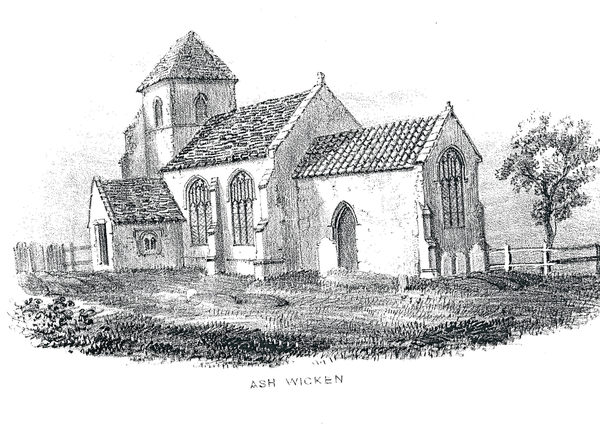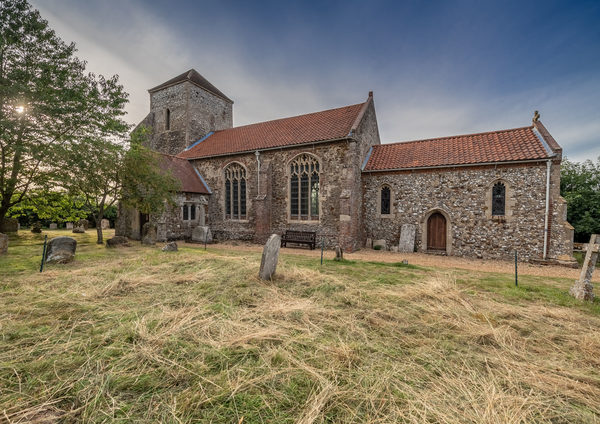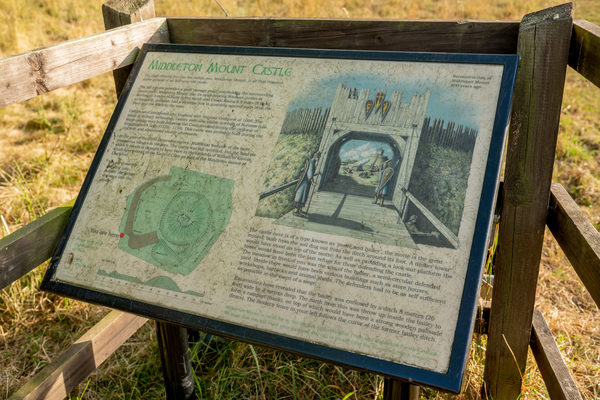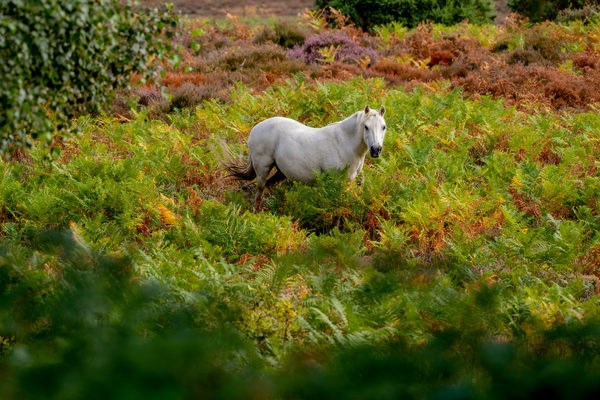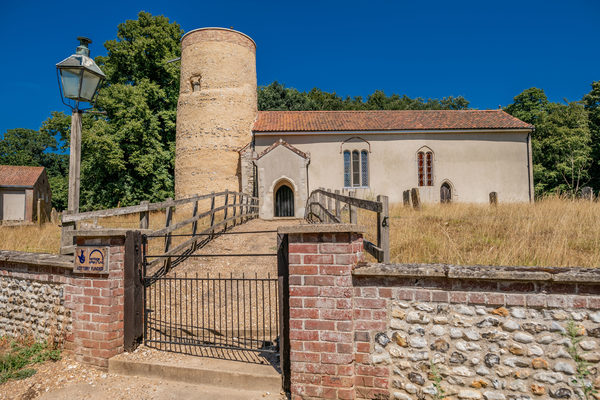This village is situated to the east of King's Lynn and coincides with the narrow belt of carrstone country stretching from Hunstanton to Downham Market. Carrstone is a special feature of the churches in this area. High quality sand from Ashwicken has been extracted for making glass.
The tower is early 14th century and the local carrstone predominates in its middle stage below the string course. It was built without buttresses and then in the 17th century large stepped brick buttresses were added to it on the diagonals. By using some darker coloured bricks a pattern was given to the brickwork. The pyramid roof in place of battlements is a particular feature of this tower.
The South porch has all the features of a medieval porch of the 15th century with small double light windows on each side under nice square topped labels. Originally, it was the place for secular parish meetings and for weddings. The vacant niche above the entrance tells us of the abolition of images in 1538.
The North doorway has a curious brick arch and very early brickwork. It has been blocked up for a very long time, but one wonders if there was once a porch here.
Victorian restoration followed a long period of neglect and the restoration was very thorough. Hugh Bryant wrote about that the church - was once much larger, but this is not untiated.
Chancel walls were refaced on the outside using stones derived from former window frames and other parts. Inside the waits were given decorative arcading on both. The East window was reconstructed in 1878 and the chancel dows were added in 1906 and 1908.
Font was made by Maj. Markham Kittoe at Benares.
The pipe organ was made by Norman & Beard and bought for this church in 1904.
The Lectern is in the form of an eagle with its wings poised ready to take off and symbolically to carry you in imagination heavenwards. It revolves on a globe.
The chancel arch is a Victorian reconstruction with carved emblems on the capitals. On the North side we see shamrock, thistle and rose with the head of a man with his tongue out. Opposite is a face like a pig amidst various leaf designs. Perhaps here we are meant to laugh at the gossip and the glutton amidst this green and pleasant land.
The East window was glazed by Ward & Hughes in 1879 and the designer signs it in the bottom right corner - "H.Hughes, London". It depicts the Crucifixion in the centre with an angel below declaring our Lord's final words - "It is finished". This is surrounded by four scenes telling the parable of the Good Samaritan. The colours are excellent and these panels contain nice details of the donkey, the Pharisee, the Levite and the Inn.
The oak benches with carved poppy heads were installed in 1844. The altar frontal was made as a reredos in 1904 and has a crucifix in the centre.
The memorials are mostly self-explanatory, but there is one of special interest hidden under the carpet on the North side of the sanctuary that is for the Rev. John Temple, died 1810, aged 48, rector of these parishes and of Bagthorpe. His crest is a martlet (bird) on a ducal coronet, and his arms include the eagle displayed. In ancient times, this was the emblem for Leofric, Earl of Mercia.
